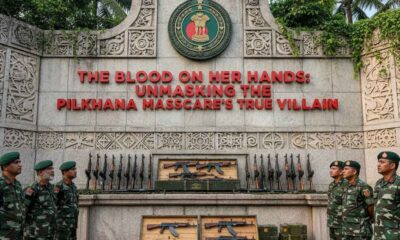Breaking
Israel-Hamas Ceasefire Deal Set to Begin with Prisoner and Hostage Exchange

In a significant development toward easing hostilities, Israel and Hamas have agreed to a ceasefire deal that is set to go into effect on Sunday, January 19, 2025. agreement, which was formally approved by the Israeli government early Saturday, includes provisions for a phased exchange of prisoners and hostages as well as increased humanitarian aid access to Gaza.
Prisoner Exchange Details
As part of the first phase of the agreement, Israel will release 735 Palestinian prisoners, the majority of whom are set to be freed within the first six weeks of the truce. Israeli Justice Ministry confirmed that 95 prisoners, including 70 women and 25 men, will be released on the first day. Among them are ten minors aged between 16 and 18.
Meanwhile, Hamas and its allied groups will release 33 Israeli hostages during this initial phase, including three Israeli women, according to U.S. officials. Foreign nationals held captive in Gaza are also expected to be part of the exchange, though their identities remain undisclosed.
Humanitarian Aid and Ceasefire Monitoring
ceasefire provides an essential respite for Gaza, a territory battered by over a year of continuous conflict. Humanitarian aid deliveries to the region will be ramped up to 600 trucks daily, offering much-needed relief to civilians. Egypt, along with Qatar, the United States, Israel, and Palestinian representatives, will operate a joint monitoring center in Cairo to oversee the deal’s implementation.
Antoine Renard, Palestine Country Director for the United Nations World Food Programme (WFP), expressed readiness to scale up aid distribution. However, he emphasized the importance of securing aid corridors and addressing challenges posed by recent looting incidents in Gaza.
Palestinian Authority’s Role
Palestinian Authority (PA) President Mahmoud Abbas has declared the PA’s readiness to assume full administrative and security responsibilities in Gaza. PA governed Gaza until 2007 when Hamas took control following the 2006 elections. Abbas has pledged to restore essential services, manage crossings, and lead reconstruction efforts in war-torn territory.
Challenges and Controversies
Despite the optimism surrounding the ceasefire, the deal has faced criticism within Israel. Far-right National Security Minister Itamar Ben Gvir and or officials have voiced opposition, citing risks to national security. Israeli Foreign Minister Gideon Sa’ar acknowledged challenges but described the agreement as a necessary decision to protect hostages and facilitate humanitarian relief.
In days leading up to the agreement, Israeli airstrikes continued in Gaza, killing over 110 people, including 30 children, according to Gaza’s Civil Defense. Hamas has accused Israel of attempting to undermine the truce through intensified attacks.
International Mediation and Future Outlook
agreement marks a rare instance of cooperation between warring factions, aided by international mediators. It also signals a shift in the region’s geopolitical dynamics as foreign governments and organizations work to stabilize the situation.
While the deal provides hope for reduced violence and improved humanitarian conditions, its success will hinge on mutual adherence to terms and sustained international support.










